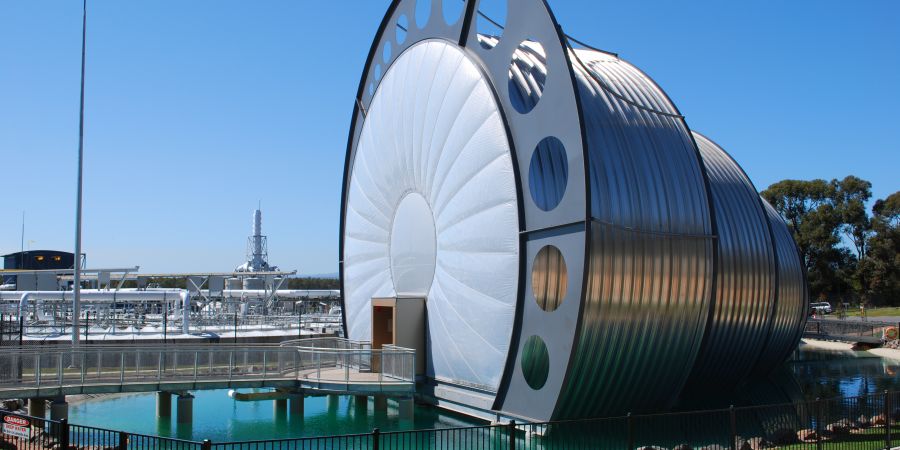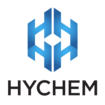Rehabilitating a Gippsland water icon

The $250 million Gippsland Water Factory was built in 2010 and comprises two wastewater treatment plants sharing common infrastructure. A major part of the facility is the concrete structure that houses the membrane bioreactor (MBR), which plays a key role in the wastewater treatment process. These cells were originally lined with an epoxy, however, the lining failed and delaminated. In early 2017, Hychem products were used to refurbish the cells.
The Gippsland Water Factory is an award winning and internationally recognised facility that treats 35 million litres of wastewater a day from nine towns in central Gippsland, and serves the needs of more than 48,000 domestic customers and 300 local businesses.
It also receives wastewater from the Australian Paper mill at Maryvale, the largest pulp and paper mill in Australia, and one of Australia’s largest industrial facilities.
Apart from treating wastewater the plant can produce up to three billion litres of recycled water a year for use by Australian Paper, thus safeguarding central Gippsland’s supply of domestic drinking water.
Why do some coatings fail?
According to Colin Murphy, Product Manager at Hychem, there are a number of reasons the previous coating could have failed and started delaminating.
“Concrete structures at water and wastewater facilities, such as the Gippsland Water Factory, are subject to a number of harsh chemicals including hydrogen sulphide and sulphuric acid which can cause corrosion, so epoxy linings are often used to prevent this,” Mr Murphy said.
“However, if these coatings are not applied correctly or at the correct thickness, or correct surface preparation is not undertaken, or not suitable for the environment, they will fail very quickly. Too often we hear that thin roll-coats of inappropriate epoxy resins have been applied in these highly corrosive environments, only for them to fail.
“When this happens the epoxy will crack or delaminate, allowing the corrosion process to begin, or in this case the delaminated coating will fall into equipment and damage it.”
Rehabilitating the MBR
Peltos Protective Coatings undertook the rehabilitation of the Gippsland Water Factory MBR.
Peter Clark, Managing Director at Peltos, said Hychem’s TL5 was chosen for the project due to its robustness and ability to withstand a wide range of atmospheric conditions.
“TL5 was ideal for this project as it can be applied to new or damaged concrete, and can be used in harsh water and wastewater environments where the coating will be exposed,” Mr Clark said.
“It has a good track record in the water industry, having been used to coat water and wastewater assets for over 20 years, with little change to the coating recorded. As the previous coating had failed in less than ten years, the client wanted a more robust solution that wouldn’t require constant maintenance and reapplication.
“It can also be applied to a thickness of 2-6mm so only one coat is needed, reducing the amount of time an asset needs to be closed down.”
Preparing the surface
Mr Clark said that correct preparation is key for the long-term success of an epoxy installation.
“Correct surface preparation is important as the surface needs to be clean, contaminant free, and have the right roughness or profile to ensure the epoxy adheres properly and future breakdown of the coating is prevented,” Mr Clark said.
“For the Gippsland Water Factory project, we used pressure jetting at 10000 psi to prepare all the areas to be coated, we hand sanded all the existing coating to improve the mechanical bond, and all areas with 20mm loss were filled with primer to reduce the risk of blisters forming.
“All the work was carried out at six meters in scissor lifts over the course of nine days.
“We did encounter some challenges during the project as weather conditions delayed some of our work due to safety concerns and trying to keep the line free of all the mechanicals.”
The rehabilitation of the Gippsland Water Factory MBR was the third stage of a six week project, with the client happy with the results achieved.
